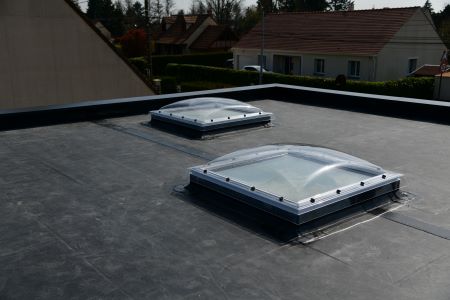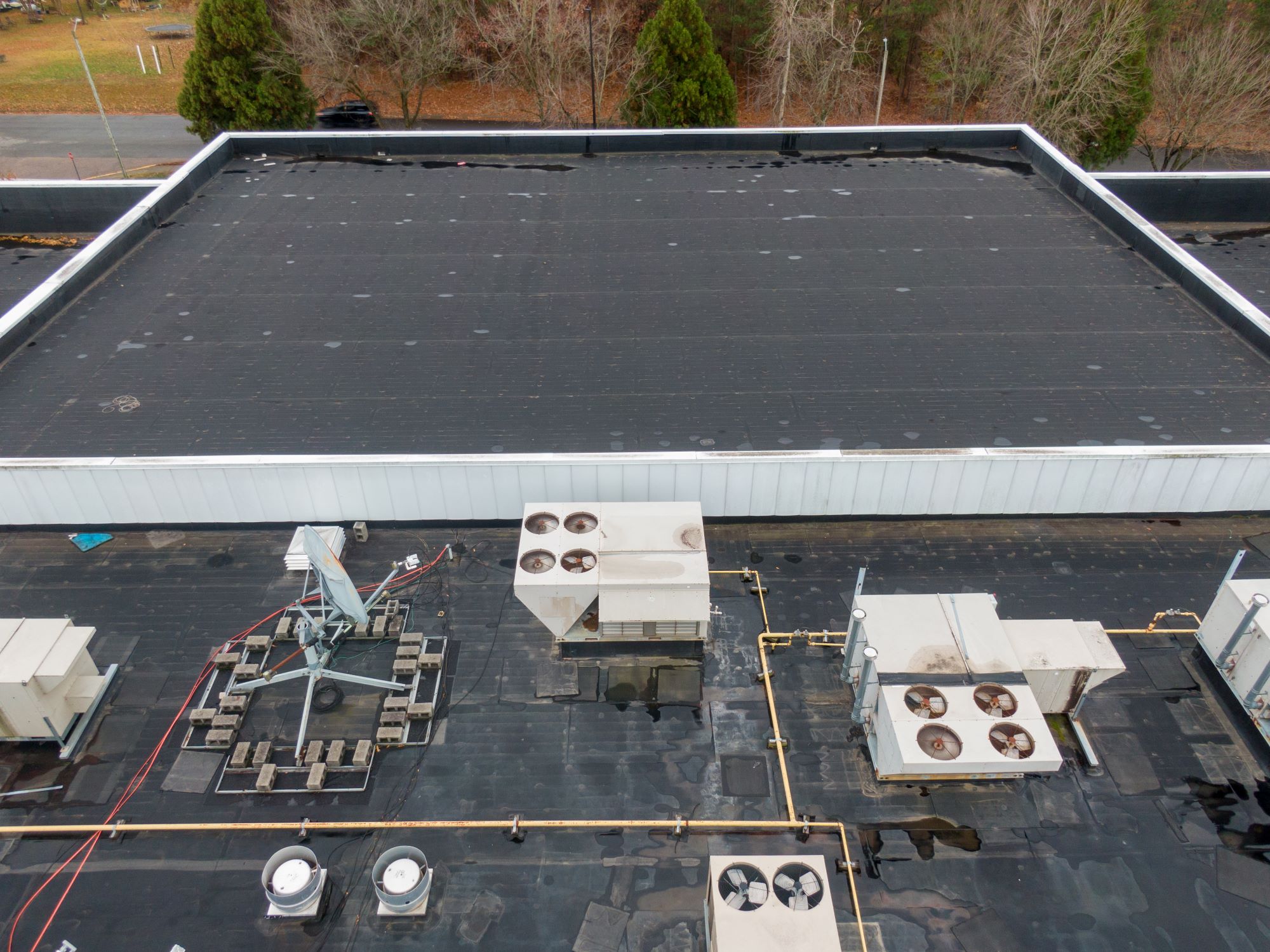Commercial roofs play a crucial role in maintaining the energy efficiency of a building. A well-designed and properly maintained commercial roof can significantly reduce energy consumption and costs. In this article, we will explore the key factors that affect the energy efficiency of a commercial roof and provide valuable DIY tips on how to make your new roof more energy-efficient. We will also discuss the importance of roofing ventilation and safety in achieving optimal energy efficiency.
Key Factors Affecting Energy Efficiency in Commercial Roofs
Roofing Material Selection
One of the most critical factors influencing the energy efficiency of a commercial roof is the choice of roofing material. Different roofing materials have varying levels of thermal resistance (R-value) and reflectivity, which directly impact a building’s energy consumption. Here are some common roofing materials and their energy efficiency characteristics:
a. Reflective Roofing Materials: Materials like cool roofing membranes, white or reflective single-ply roofing, and metal roofing are highly reflective and can reflect a significant portion of the sun’s heat away from the building. This helps in reducing the heat absorbed by the roof and, consequently, the building’s cooling load.
b. Insulating Roofing Materials: Insulated roofing materials, such as foam boards or polyisocyanurate, provide excellent thermal resistance. They prevent heat from transferring through the roof, keeping the building cooler in the summer and warmer in the winter, thus reducing energy consumption for heating and cooling.
c. Green Roofing: Green or vegetative roofing involves planting vegetation on the roof’s surface. These roofs provide natural insulation and absorb solar radiation, reducing heat transfer and energy consumption.
When selecting a roofing material for your commercial roof, consider the climate, local weather conditions, and the specific energy efficiency goals of your building.
Roof Insulation
Proper insulation is crucial for energy efficiency in commercial roofs. Inadequate insulation allows heat to escape during the winter and enter during the summer, leading to increased heating and cooling costs. To enhance energy efficiency, you should:
a. Assess the R-value: The R-value of your roof insulation should be sufficient for your climate zone. Consult local building codes and energy efficiency guidelines to determine the recommended R-value for your area.
b. Address Thermal Bridges: Identify and eliminate thermal bridges in the roof structure, such as gaps or uninsulated areas that allow heat transfer. Properly seal and insulate these areas to prevent energy loss.
c. Consider Spray Foam Insulation: Spray foam insulation provides an airtight and highly effective insulation barrier. It can be applied to existing roofs and offers excellent thermal resistance.
Roofing Ventilation
Roofing ventilation is a critical element in maintaining an energy-efficient commercial roof. Proper ventilation helps regulate temperature and moisture levels in the attic or roof space, preventing heat buildup and moisture-related issues. Here are some roofing ventilation considerations:
a. Ridge and Soffit Vents: Ridge and soffit vents provide continuous airflow through the roof, allowing hot air to escape from the attic while drawing in cooler air from the outside. This natural convection process helps regulate the temperature under the roof deck.
b. Attic Fans: Attic fans can be installed to enhance ventilation in commercial roofs. These fans help remove hot air from the attic space, reducing the cooling load on the building.
c. Vapor Barriers: Install vapor barriers to control moisture levels in the attic or roof space. Excess moisture can lead to insulation degradation and reduce energy efficiency.
d. Insulate Attic Ductwork: If your commercial building has HVAC ductwork in the attic, ensure that it is properly insulated to prevent conditioned air from escaping into the attic space.
Roofing Design and Maintenance
The design and maintenance of your commercial roof also play a crucial role in energy efficiency. Proper design and regular upkeep can extend the lifespan of your roof and maximize its energy-saving potential. Consider the following tips:
a. Roof Slope: Design your roof with an appropriate slope to ensure efficient water drainage. Standing water on the roof can lead to leaks and reduce insulation effectiveness.
b. Regular Inspections: Schedule routine roof inspections to identify and address issues promptly. Leaks, damaged insulation, or deteriorating roofing materials can compromise energy efficiency.
c. Roof Coatings: Apply reflective roof coatings to existing roofs to improve reflectivity and reduce heat absorption. These coatings can extend the lifespan of your roof while enhancing energy efficiency.
d. Gutter Maintenance: Keep gutters and downspouts clear of debris to prevent water buildup on the roof. Clogged gutters can lead to leaks and damage.
Roofing Safety
Safety should always be a top priority when working on commercial roofs. Proper safety measures not only protect workers but also ensure that roofing projects are completed efficiently and effectively. Here are some safety considerations:
a. Fall Protection: Install fall protection systems, such as guardrails, safety nets, or personal fall arrest systems, to prevent accidents and injuries while working on the roof.
b. Roof Access: Provide safe and secure roof access points with proper ladders or stairways. Ensure that access points are well-maintained and clearly marked.
c. Training: Ensure that all personnel working on the roof are adequately trained in safety protocols and procedures. Regular safety training and equipment inspections are essential.
DIY Tips for Enhancing Energy Efficiency in Commercial Roofs
Now that we’ve explored the key factors affecting the energy efficiency of commercial roofs, let’s discuss some DIY tips to help you make your new roof more energy-efficient:
Conduct an Energy Audit
Before embarking on any roofing project, conduct an energy audit of your commercial building. This audit will help you identify areas of energy waste and determine specific improvements needed for your roof. You can hire a professional energy auditor or use online tools to assess your building’s energy performance.
Choose Energy-Efficient Roofing Materials
Select roofing materials that align with your energy efficiency goals. Consider cool roofing materials with high reflectivity and insulation properties. Ensure that the chosen materials meet local building codes and energy efficiency standards.
Proper Insulation Installation
If you’re installing a new roof or replacing an existing one, pay close attention to the insulation. Install insulation materials with the recommended R-value for your climate zone. Ensure that the insulation is properly sealed and covers all areas to prevent thermal bridging.

Implement Effective Roof Ventilation
Enhance roof ventilation by installing ridge and soffit vents or attic fans if necessary. Consult a roofing professional to determine the most suitable ventilation system for your building. Proper ventilation helps regulate temperature and moisture levels, improving energy efficiency and preventing moisture-related issues.
Regular Roof Maintenance
Establish a routine maintenance schedule for your commercial roof. Regular inspections and maintenance can help identify and address issues before they become major problems. Address leaks, damaged roofing materials, and clogged gutters promptly to maintain energy efficiency.
Apply Reflective Roof Coatings
Consider applying reflective roof coatings to your commercial roof to improve its reflectivity. Roof coatings can extend the lifespan of your roof while reducing heat absorption and energy consumption. Consult a professional for the best coating options for your specific roofing material.
Seal Gaps and Cracks
Inspect the roof for gaps, cracks, or openings that could allow air leakage. Seal these gaps with appropriate sealants or insulation materials to prevent energy loss. Pay special attention to areas around roof penetrations, such as vents and chimneys.
Invest in Energy-Efficient Lighting
While not directly related to the roof itself, upgrading to energy-efficient lighting systems within your commercial building can reduce overall energy consumption. Consider LED lighting and implement lighting controls to optimize energy use.
Monitor Energy Usage
Install an energy monitoring system to track energy consumption in your commercial building. Monitoring allows you to identify patterns and make informed decisions on further energy-saving measures.
Energy efficiency in commercial roofs is a vital consideration for building owners and managers. By understanding the key factors that affect energy efficiency and implementing the DIY tips discussed in this article, you can make your new commercial roof more energy-efficient. Proper roofing material selection, insulation, ventilation, design, and maintenance are essential elements in achieving optimal energy performance. Additionally, prioritizing safety measures during roofing projects ensures the well-being of workers and the long-term success of your energy-efficient initiatives. Remember that while DIY efforts can make a significant impact, consulting with roofing professionals is advisable for complex projects to ensure that your commercial roof meets energy efficiency goals and local building codes.

